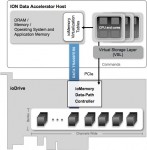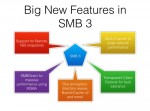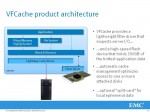ioN gives Fusion-io a place at the ultra-performance array table. Faced with the prospect of commoditization, Fusion-io is wise to respond with software-based differentiators that leverage the unique capabilities of their ioMemory architecture. It shouldn’t annoy too many partners, either.
InfiniBand
Who Will Support SMB 3.0, and Which Features Will They Support?
I’m really thrilled about the improvements Microsoft is making to the core SMB protocol in Windows Server 2012. But it won’t really matter if nobody but Microsoft supports the new protocol. So I like to call out to all the enterprise storage vendors: Let me hear your support for SMB3.0!
SMB 3 is Going to be Huge, in both Scope and Impact
Microsoft is about to release the third major revision to their ubiquitous network storage protocol, SMB. Windows Server 2012 and Hyper-V 3 will really highlight this technology, and I predict it will transform the way people think about networked storage for Windows systems. But SMB 3 is big in another way, too: there are tons of new features, and not all will be implemented by everyone.
EMC VFCache (aka “Project Lightning”) Is One Small Step, But an Important One
EMC VFCache (née Project Lightning) is a fairly simple offering: A server-based PCIe flash card that acts as a read cache with no integration with storage arrays or hypervisors. But EMC’s entrance into the host-based flash storage market is a powerful demonstration of the wave of disruption caused by flash-based storage and high-performance computing.
Nimbus E-Class: The First Big, Redundant, All-Flash Enterprise Array
The new Nimbus Data E-Class comes just at the right moment, with 500 TB of capacity, a fully redundant “dual active†controller architecture, massive performance (even InfiniBand), and complete feature set (once VAAI is released).



